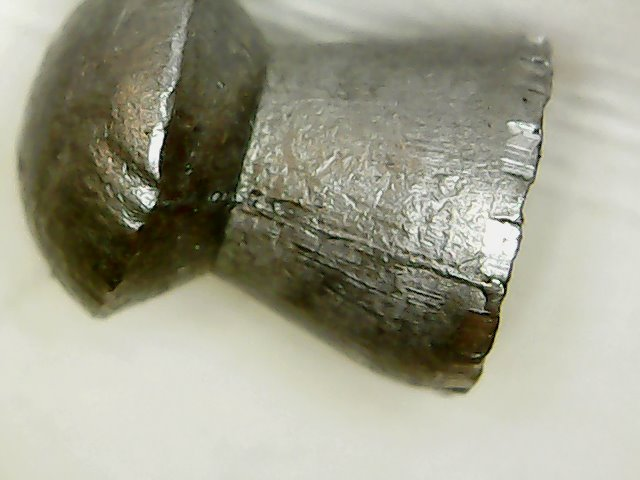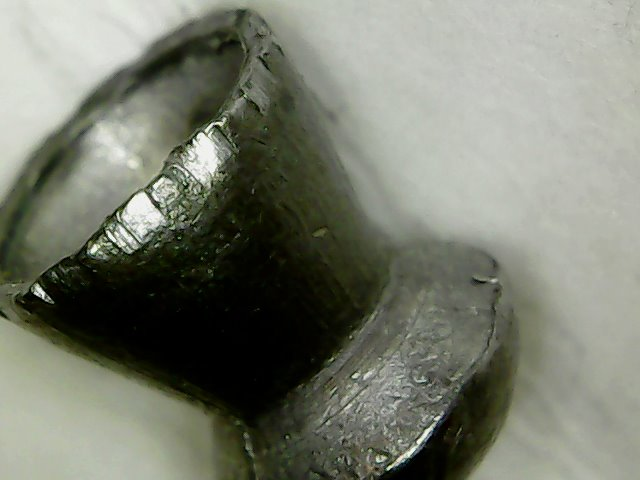Phillip....my name is Lol....confusing in this day of text speak I know
I think we are interpreting the picture differently, its two of the same type pellet, to my eye the skirt of the "fired" pellet has indeed expanded (it looks more rounded) as you say a very good job of capturing has been done. If you cover the bottom quarter of the skirt and just look at the top portion of the skirt it does look different.
This was not intended to join into the debate about whether pellets sealed completely in the grooves of rifling, it just shows that the pellet skirt deforms (as stated by a few on here) and as such the deformation will effect the pellet flight, which is ultimately what counts.
Before all your testing I believed that sealing was probably the case - not so sure now.
I agree there appears to be no evidence on this picture of "sealing".
Anyway, the article is by Hector Medina in the states, he writes some really interesting stuff (as do you), here is the article:
https://www.ctcustomairguns.com/hect...to-the-rifling
The bit that caught my eye and set me off messing with breeches was this:
Careful experiments have shown that pellets DO DEFORM upon firing. And one of my preferred methods of choosing the best possible pellet for a barrel involves soft-capturing fired pellets and measuring how much they expand at the waist or the column. The more they expand, the less are we in control of the final shape of the pellet once we have pulled the trigger.
Once the pellet starts to move, depending on how the chamber was machined (or not), the head engages the rifling before the skirt and this also exerts a TORSIONAL stress on the waist or the column. At times, this stress may be enough to deform the pellet substantially, in most cases it is not, but it is still mentioned here to point out to problematic barrels that, in reality, need only to have their chambers fitted to the pellet the shooter wants to use.
Great believer in the importance of the skirt - how good do these Qiang Yuan bad boys look
https://photos.app.goo.gl/QXwKC4TaERJgQKxA6
One or two tiny nicks in there but easily fixable on the pellet tin lid with a rub








 Reply With Quote
Reply With Quote

